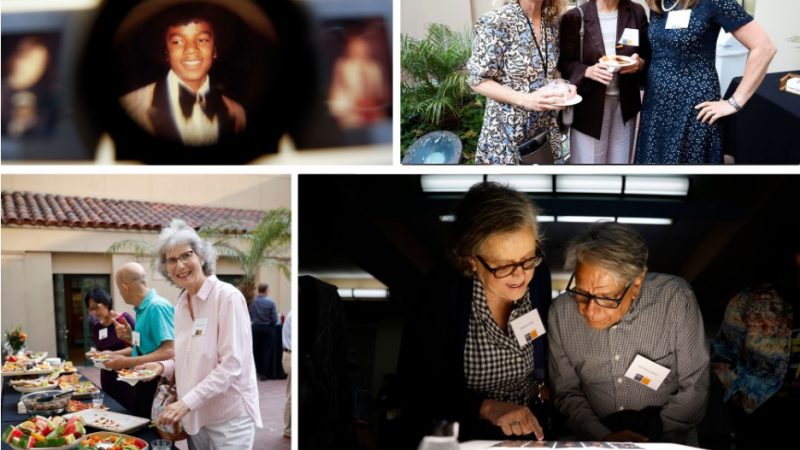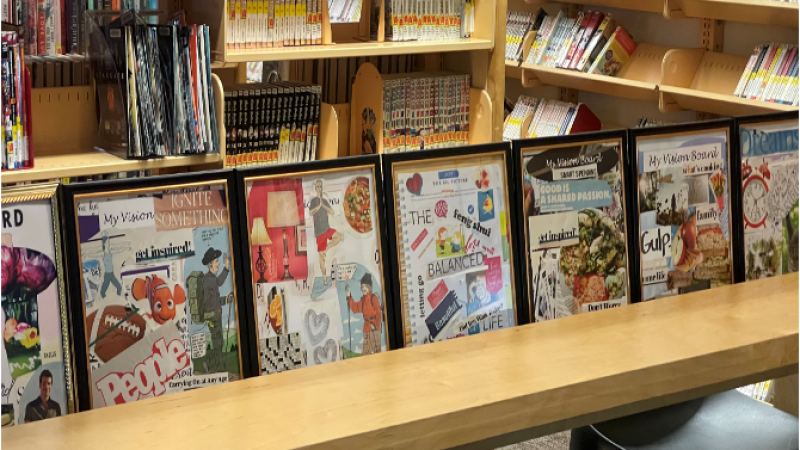Library as history. Library as art. Library as culture. Library as the skeleton of existence.
In the spirit of the Mexican Revolution photographic exhibition, A Nation Emerges: The Mexican Revolution Revealed, currently on view at the downtown Central Library (through June 2nd-visit while you can!), I thought it would be fun to lead you on a photographic journey to the libraries I recently visited on a spring trip to Mexico. From the 19th century former girls-school-turned-central library of Oaxaca City to the cultural centers/libraries that house private collections of philanthropists and artists, to the ultra modern Vasconcelos library of Mexico City, my visit confirmed libraries are very much alive in Mexico: ¡qué vivan las bibliotecas!
 Saturday morning at the Central Library reading room, Oaxaca City
Saturday morning at the Central Library reading room, Oaxaca City
 In the history and archeology department of the Central Library, librarian Javier Rodríguez conserves and repairs book covers and spines himself, using this press. The rare book collection in this department is kept in a glass case; he says researchers from UCLA and the Netherlands are the most frequent users of books from the collection, many of which date back to 1880.
In the history and archeology department of the Central Library, librarian Javier Rodríguez conserves and repairs book covers and spines himself, using this press. The rare book collection in this department is kept in a glass case; he says researchers from UCLA and the Netherlands are the most frequent users of books from the collection, many of which date back to 1880.
With extremely limited funds, this particular department is without internet access or a digitized catalog. Whereas seeing a typewriter and card catalog among the shelves was nostalgic for me as a visitor, Javier longs for an upgrade into the 21st century to better display the collection and share it with the rest of the world.
Students in the science department; books can’t be checked out and taken home, so most studying is done at the library.
Blocks away from the tired and outdated Central Library is the Biblioteca Henestrosa, founded in the year 2003 by philanthropist Alfredo Harp Helú. Part exhibition space, part library, with over 60,000 titles, the library specializes in Latin American literature and Mexican history. It’s named after the Oaxacan writer, linguist, and politician Andrés Henestrosa, known for phoneticizing the Zapotec language and creating a Zapotec-English language dictionary. The tall stacks are a treasure trove of colorful spines with wooden ladders resting up against them, inviting the visitor an ascent to the top.
I happened upon this beautiful copy of “Lecturas Mexicanas,”dating from 1901.
 Next up was the Institute of Graphic Arts of Oaxaca, an art center and library founded by the great Francisco Toledo: Oaxacan artist, activist, and philanthropist. The center holds an extensive collection of art books from Toledo’s private collection, with paintings by Remedios Varo adorning the walls, and the scent of Oaxacan coffee wafting into the book galleries from the adjacent café. What more could you want from a visit to your local library?
Next up was the Institute of Graphic Arts of Oaxaca, an art center and library founded by the great Francisco Toledo: Oaxacan artist, activist, and philanthropist. The center holds an extensive collection of art books from Toledo’s private collection, with paintings by Remedios Varo adorning the walls, and the scent of Oaxacan coffee wafting into the book galleries from the adjacent café. What more could you want from a visit to your local library?
From the historic to the contemporary, this journey through Mexican libraries ends in Mexico City’s super modern Vasconcelos library, where the stacks hang from the ceiling. Alongside them swims a gargantuan blue whale- a skeleton of life, culture, and history- quite appropriately housed in the public library.
Whale installation by Gabriel Orozco, Biblioteca Vasconcelos.
– Post and images by Maureen Moore










